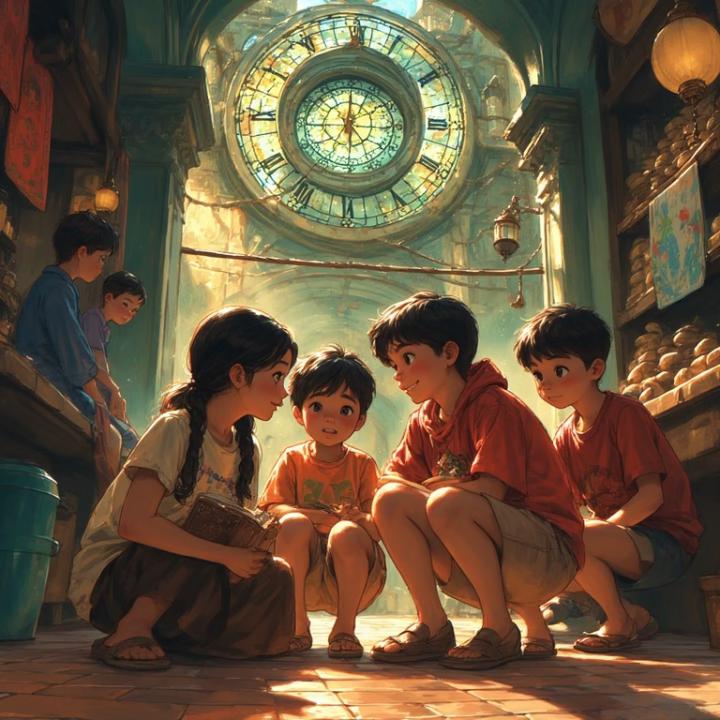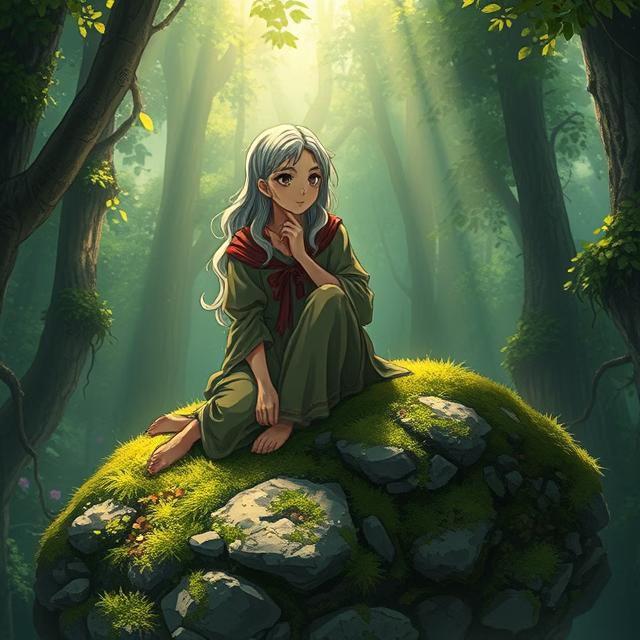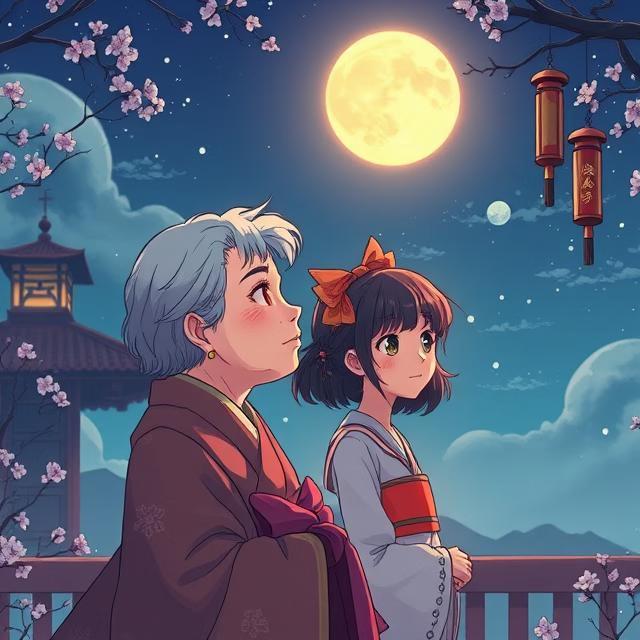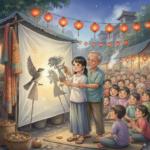
The rain had just stopped when Aisha first noticed the loose floorboard.
She and her friends—Leo, Mei Lin, and Amir—had ducked into KL Central Market to escape the afternoon downpour. The market, with its high wooden rafters, stained-glass windows, and labyrinth of stalls selling batik, pewter, and hand-carved wooden toys, was their favorite rainy-day refuge. Today, though, something felt different. Maybe it was the way the afternoon light slanted through the arched windows, painting golden stripes across the terracotta tiles. Or maybe it was the faint ticking of the old clock above the main entrance—a sound Aisha had never really noticed before.
“Check this out,” Aisha said, crouching near a stall that sold vintage postcards. She tugged at a warped plank near the base of a support beam. With a soft creak, it lifted.
Beneath it lay a small, oilcloth-wrapped bundle.
Leo, ever the skeptic, crossed his arms. “Probably just someone’s lunch.”
But Mei Lin, eyes wide behind her glasses, leaned in. “It’s too neat for that.”
Amir, already filming on his phone (strictly for “documentary purposes,” he insisted), zoomed in as Aisha carefully unwrapped the bundle. Inside was a leather-bound diary, its cover faded but intact, and a brass key stamped with the initials “K.L.C.M.”
The first page read:
If you’ve found this, you’re meant to finish what I started.
Follow the hands of time, not the numbers on the clock.
—Elias, 1948
“1948?” Leo whispered. “That’s right after the war.”
Aisha flipped through the brittle pages. Sketches of market stalls, coded notes, and a map of old Kuala Lumpur filled the diary. One page showed a detailed drawing of the Central Market clock—but the hands pointed to 3:17, not the current time.
“Maybe it’s a clue,” Mei Lin said.
And just like that, the hunt began.
Their first stop was the clock itself. Climbing onto a stack of empty crates (with the stall owner’s reluctant permission), Amir reached the clock’s face. Behind the minute hand, tucked into a narrow groove, was a tiny metal tube. Inside: a slip of paper with a riddle:
Where shadows dance on batik wings,
And stories hide in woven strings,
Seek the stall with peacocks bright—
There, the second key takes flight.
“Batik and peacocks?” Mei Lin said. “That’s Mak Cik Salmah’s stall! She has that huge peacock wall hanging.”
They raced through the aisles, past stalls selling songket fabric, durian candies, and miniature gasing tops. At Mak Cik Salmah’s, Aisha pretended to admire a batik scarf while Leo scanned the shelves. Behind a stack of folded sarongs, Amir spotted a small wooden box shaped like a traditional tiffin carrier. Inside was another key—and another note:
Water flows where traders meet,
Beneath the bridge where boats once beat.
Find the stone with three carved waves—
Truth sleeps where the river saves.
“The Klang River!” Leo said. “Near the old bridge by Masjid Jamek.”
They sprinted out of the market, past street food vendors and trishaw drivers, dodging puddles and tourists. At the riverbank, they searched the mossy stones near the colonial-era bridge until Mei Lin cried out. “Here! Three waves carved into the rock!”
Beneath a loose stone lay a rusted tin box. Inside was a photograph of a young man in a 1940s school uniform—Elias—and a final message:
The war took much, but not our hope.
I hid something precious—something that belongs to the people.
It’s beneath the heart of the market, where music once played.
Don’t let them forget.
“Music?” Aisha frowned. “There’s no stage here.”
But Amir remembered something. “My grandma told me the market used to have a bangsawan troupe that performed in the central courtyard during festivals. They’d set up right under the clock.”
Back at the market, now bathed in the golden hour light, they gathered in the open space beneath the clock tower. The floor was tiled, but one section near the old fountain (now dry) looked slightly uneven. Using the two keys together—they fit into twin keyholes hidden in the tile grout—they lifted a concealed panel.
Inside was a small wooden chest. And inside that… a collection of hand-painted story scrolls, a harmonica, and a letter:
To whoever finds this:
During the Japanese occupation, artists and teachers hid here, sharing stories and songs to keep our spirit alive. These scrolls contain folktales from every community in Malaya—Malay, Chinese, Indian, Orang Asli. They were meant to remind us that we are many, but one.
Please share them.
—Elias bin Rahman
The friends sat in silence, the weight of history pressing gently on their shoulders.
The next week, with permission from the market’s heritage committee, they helped organize a “Story Night” under the clock. Aisha read a tale about a clever mouse and a durian tree. Mei Lin played the harmonica. Leo projected Elias’s sketches onto a screen. Amir filmed it all—not for views, but for memory.
As the crowd of children, tourists, and elders listened, the old clock ticked steadily above them, its hands moving forward—but its secret now alive again.










